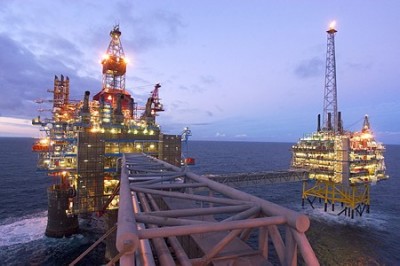Norway’s krone plunged on Tuesday, a day that currency brokers were referring to as “historic” for Norwegian exchange rates. The dive was blamed on another fall in oil prices, but economists at Norway’s biggest bank claimed the country’s economy remains far from any crisis.

The day was nonetheless dramatic for currency traders. “We are seeing a massive weakening of the Norwegian kroner,” Ole Håkon Eek-Nielsen of Nordea told Norwegian Broadcasting (NRK) at mid-day. By mid-afternoon it suddenly took NOK 7.58 to buy one US dollar, up from 7.34 in the morning. Later in the day the krone regained some of its value, trading at NOK 7.46 to the dollar.
Eek-Nielsen, chief currency analyst at Norway’s second-largest bank, also noted that the euro strengthened dramatically against the krone. “This day will go into the history books as the day with the biggest weakening of the krone ever,” he said. He said the krone had never fallen so much against the euro, not even during the finance crisis in 2008. By mid-afternoon it took NOK 9.50 to buy a euro, and analysts weren’t ruling out that it would reach or exceed NOK 10.
The krone was hit hard once again by falling oil prices, which dipped below USD 60 a barrel on Tuesday. “This is all coming as an impulse from lower oil prices, but the krone is weakening more compared with the oil price fall than it has before,” he said.
By mid-afternoon, the value of the Norwegian krone was the same as the Swedish krone for the first time in several years.
Magne Østnor of DNB, Norway’s biggest bank, told NRK that “it was difficult to use any other word than ‘panic'” in describing what was behind Tuesday’s sharp decline in the value of the krone. He doesn’t think the currency turbulence is over, either.
At the same time, DNB economists point to fundamental strengths in the Norwegian economy. While lower oil prices and the weaker krone can mean lower economic growth, lower wage growth and higher unemployment, they think Norway will ultimately have a “soft landing” after all the turbulence.
In its updated economic analyses released on Tuesday, DNB still predicts economic growth next year of about 1.1 percent with lower interest rates holding up consumption. The next few years will be “tougher than we’ve been used to in the past 10 years,” but unemployment will stay relatively low compared to other countries, topping out at around 4 percent. The bank sees no signs of economic crisis.
“There will be weaker wage growth and higher unemployment,” said DNB’s senior economist Kjersti Haugland. “But luckily, interest expenses will remain low.” She thinks housing prices will also settle down. “We’re looking at a soft landing for the Norwegian economy,” she said.
newsinenglish.no/Nina Berglund

